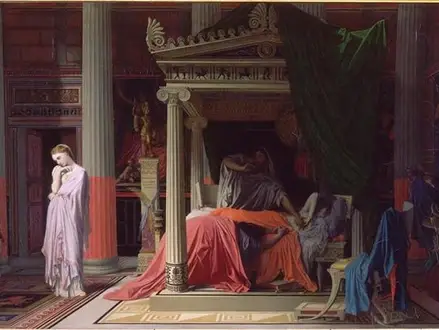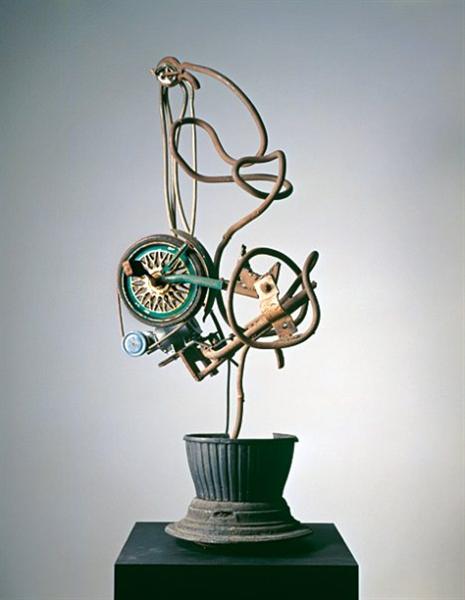Title of Artwork: “Antiochus and Stratonice”

Artwork by Jean Auguste Dominique Ingres
Year Created 1840
Summary of Antiochus and Stratonice
Jean Auguste Dominique Ingres’ 1840 painting, The Sickness of Antiochus or Stratonice and Antiochus, depicts the illness of the biblical figure. Currently, it is housed in Chantilly’s Musée Condé.
All About Antiochus and Stratonice
During the reign of Prince Ferdinand Philippe, Duke of Orléans, Paul Delaroche’s 1834 painting The Assassination of the Duke of Guise (now housed in Condé’s musée Condé) was commissioned as a companion piece. Ingres departed for Rome in the same year to assume the post of director of the French Academy. This caused a lag in the commission’s progress, which had started with a sketch done in 1838. (now in the Cleveland Museum of Art). Stratonice was modelled after Lady Eglé Charlemont, while the doctor was Hippolyte Flandrin and Seleucus was Ingres himself, according to Lady Eglé Charlemont.
The painting was completed in Rome in 1840, with the assistance of two of Ingres’ students, Paul and Raymond Balze, who used Baltard’s architectural drawings to paint part of the setting. After seeing Ingres’ work, the Duke of Orléans paid him 6000 francs and asked him to paint a portrait for him. When the Duke of Orléans died in 1842, his widow, Hélène de Mecklembourg-Schwerin, inherited the painting, which had been displayed in the Palais-gallery. Royal’s
During the French Revolution of 1848, a painting of the same name was sold in Paris for $63,000. As an intermediary for the Duke of Aumale’s brother, the duke of Orléans, who was then living in exile in London, Édouard Bocher bought it in Paris in 1863 for 93,000 francs. It was displayed in Aumale’s Chantilly castle’s salle de Tribune, where it remains today.
The scene depicted in Plutarch’s Life of Demetrius, as well as in the Bibliotheca historica of Diodorus Siculus, Lucian, Appian, and Valerius Maximus, is one described in the Bibliotheca historica. Seleucus I Nicator’s son, Antiochus, was the son of Antiochus. He fell in love with his father’s new wife, Stratonice of Syria, but he kept it a secret, even though he was dying as a result. Antiochus became agitated and his heartbeat sped up when Stratonice entered the room, so the doctor Erasistratus discovered the cause of his illness. This is how his father ends up at the foot of the bed, all but suffocated.
Erasistratus Discovering the Cause of Antiochus Disease, the painting that won Jacques-Louis David the Prix de Rome in 1774, also depicted this event. When Ingres first saw David’s painting, he made several drawings, the earliest of which was made in 1807.
A lyre is shown in the foreground, which suggests that music and opera may have been a source of inspiration. Ingres was a violinist with the orchestre du Capitole de Toulouse, which performed Étienne-Nicolas Méhul’s opera Stratonice several times. It depicts a scene from the opera Méhul, where the heroine sings her solo. An opera, Giacomo Meyerbeer’s Les Huguenots, was also used as inspiration for The Assassination of the Duke of Guise.
Stratonice, in particular, was heavily influenced by Roman sculpture in terms of both decor and clothing. The naiskos, or funerary monument, depicted on a Canosa vase and published in 1816 inspired the design of the bed.
Information Citations
En.wikipedia.org, https://en.wikipedia.org/.























